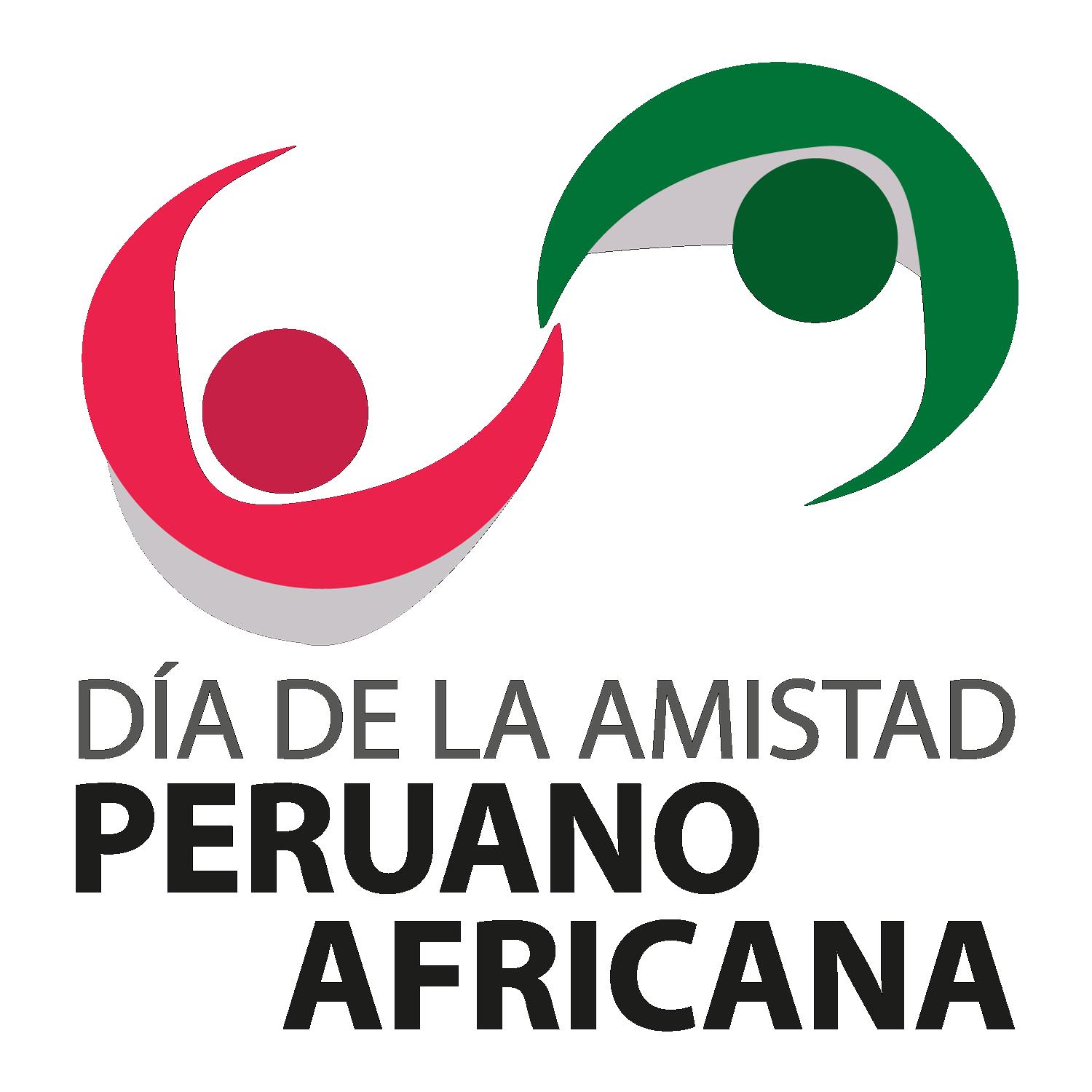




Melina Suárez Borda
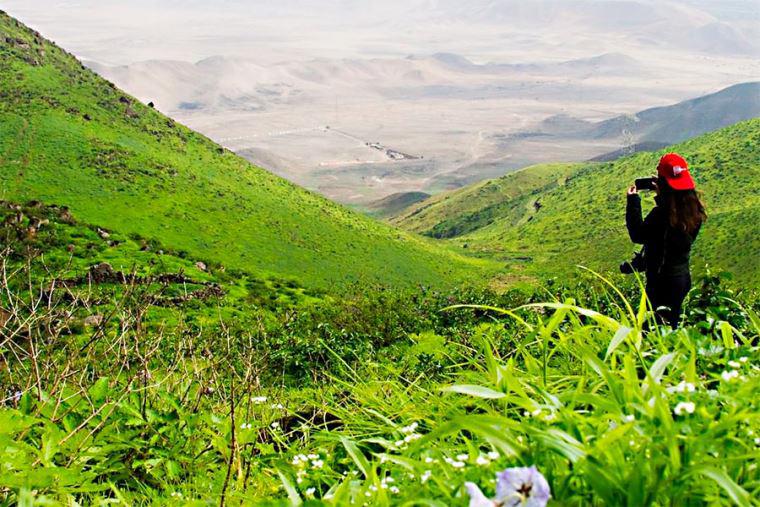
hills. Source: El peruano.pe
“José Antonio comes riding along a path, he comes from Barranco to see the Flower of Amancaes...Fine June drizzle, kisses both cheeks and four hooves singing are on their way to Amancaes”.
“José Antonio” composition by Chabuca Granda in reference to José Antonio de Lavalle y García, engineer and breeder of Peruvian Paso horses, and the Amancaes Festival, held in the coastal lomas of the same name that greens during the months of June to October.
Despite the geographical distance, Peru and South Africa share a common characteristic: both are two of the richest nations in terms of biological diversity on the planet, a trait that is internationally recognized. Thus, they have participated in various international spaces that promote the preservation of natural ecosystems and the protection of biological diversity. An example of this is the integration of both countries into the Group of Like-Minded Megadiverse Countries, created in 2002 to function as a space for interaction and cooperation to guarantee the equitable distribution of the benefits obtained from the
This article deals with two ecosystems that stand out for their rich biodiversity and face significant conservation challenges: the coastal lomas of Peru and the Cape Floral Region in South Africa. Thus, the objective is to deepen our understanding of these unique ecosystems and the common challenges they face, and to highlight the involvement of international organizations in their conservation.
Along the Peruvian coast there are coastal lomas or “fog oases”, endemic ecosystems of Peru and Chile, whose main characteristic is their seasonal dynamics. However, in a study by Moat et al. (2021), it was noted that their total area is approximately 17,093 km2, of which 12,052 km2 are found in Peruvian territory distributed among the 67 coastal lomas identified.
Meanwhile, in the southwestern area of South Africa, with a greater extension, is one of the six known Floral Kingdoms in the world: the Cape Floral Region, which covers more than 90,000 km2. Despite occupying less than 0.5% of Africa's land area, it has been reported to support approximately 20% of the continent's plant life (NASA, 2023). Thanks to its diversity in flora and high levels of endemism, UNESCO has recognized this Region as a World Heritage Site.

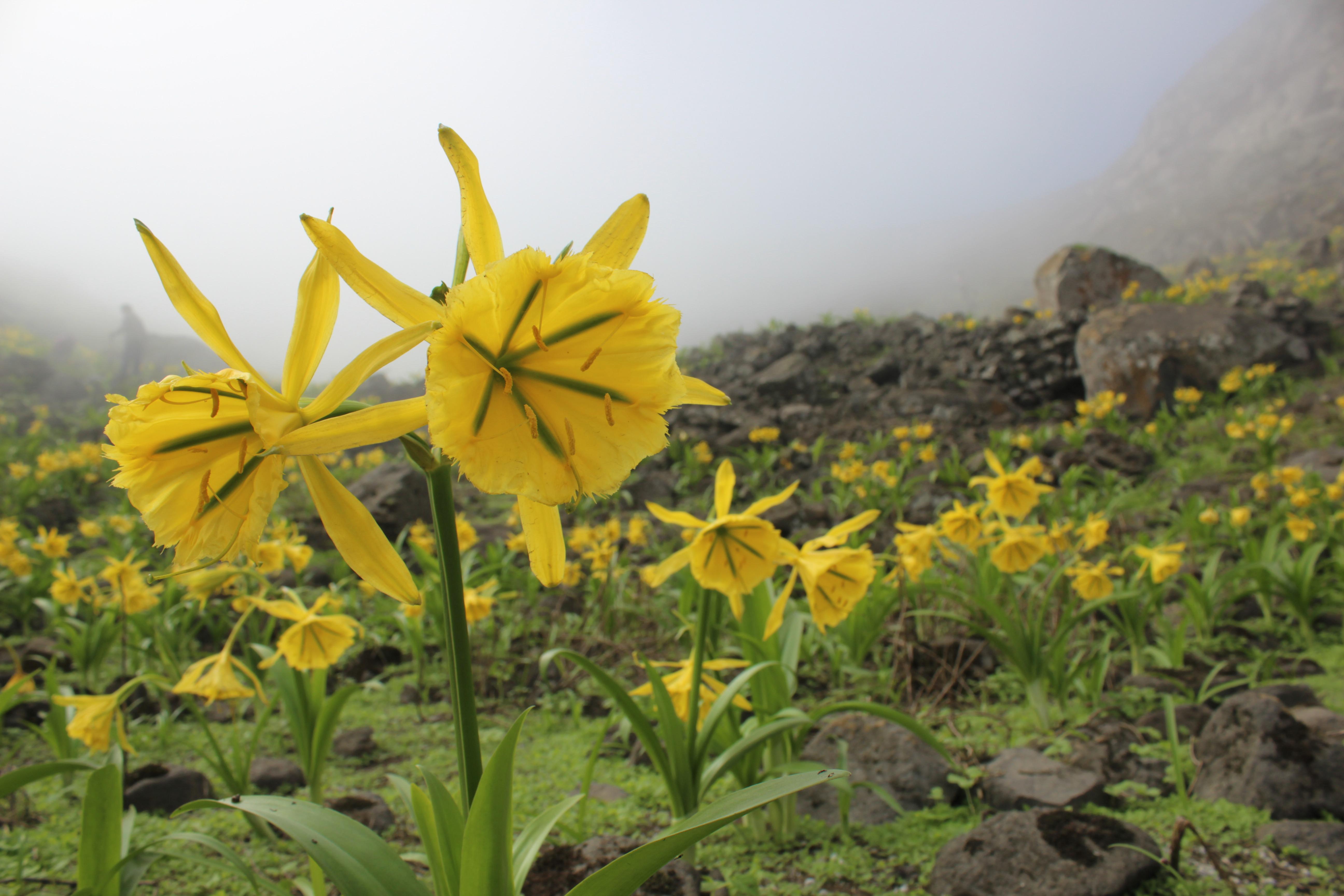
Flower of Amancaes or “Flower of Lima”. Meanwhile, the Cape Floral Region is home to fire and drought-adapted plants, such as the fynbos, known for its diversity of plant species, including the King Protea, South Africa's national flower.
Despite this, these ecosystems face similar threats. First, urban expansion has led to a complicated relationship between people and these natural environments, threatening their distribution and endemic species. Thus, between 2009-2020, around 968 hectares of coastal lomas were lost to urban growth, including the Lomas de Cerro Negro in the district of San Juan de Lurigancho in Lima (Centro Urbes, 2020; UNDP, 2022).
Another challenge identified is climate change, which alters the distribution patterns and behavior of ecosystems. Thus, although fires in the Floral Kingdom are necessary for plant regrowth and seed dispersal, its occurrence leads to the elimination of species if it happens during the wrong season or more frequently than necessary (SANBI, n.d.). Other threats include informal or illegal mining in the coastal lomas and the presence of invasive species in the Floral Kingdom.
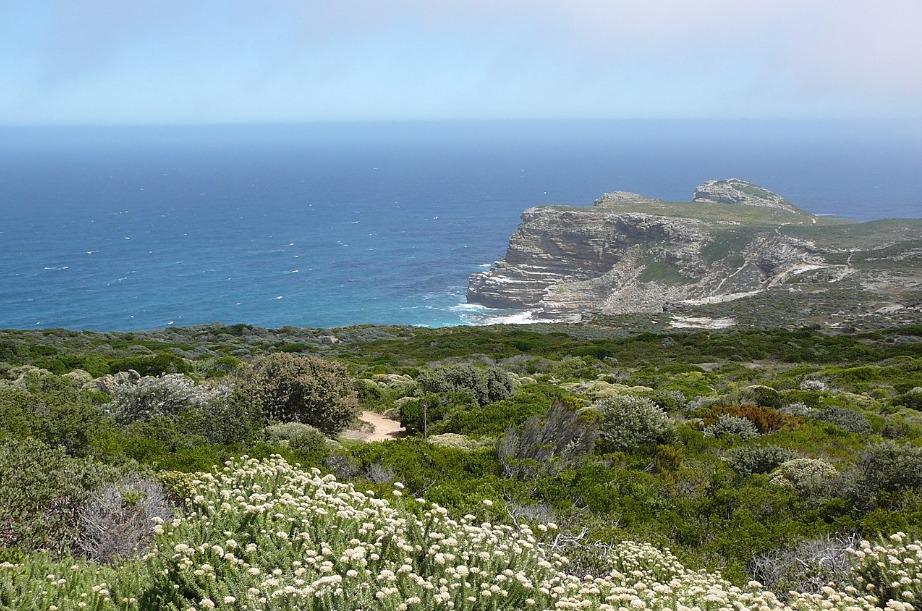
Protected areas of the Cape Floral Region.
Source: Wiki
Involvement of international organizations in the conservation of the coastal lomas and the Cape Floral Region
To promote the preservation of these areas, the governments of both countries have implemented mechanisms to protect them; however, the support of international organizations has been an important factor in achieving this. In the Peruvian case, UNDP implemented during 2016-2021 the EbA Lomas Project with the objective of conserving and sustainably managing the coastal lomas of Lima, for which joint work was carried out with local authorities and citizen organizations to whom technical support was provided.
Meanwhile, in South Africa, with monetary donations from the Global Environment Facility (GEF), the “Cape Action for People and the Environment” (CAPE), a twenty-year partnership aimed at conserving and restoring the Region's biodiversity and the adjacent marine environment, was implemented starting in 2001. UNDP and the World Bank participated in the implementation of the project, as well as the civil society, private property owners in the ecosystem areas and state institutions.
Finally, the importance of both ecosystems is highlighted because of their high level of biodiversity and endemism, but also for the ecosystem services and livelihood opportunities they can offer. For Peru and South Africa to consolidate their positions as leaders in global conservation, it is essential to strengthen and expand international partnerships, promoting initiatives that integrate the participation of the State, local communities, civil society organizations and international organizations. The privileged position of both countries in the environmental field could facilitate future cooperation in promoting ecosystem conservation and supporting citizen initiatives that share this objective.
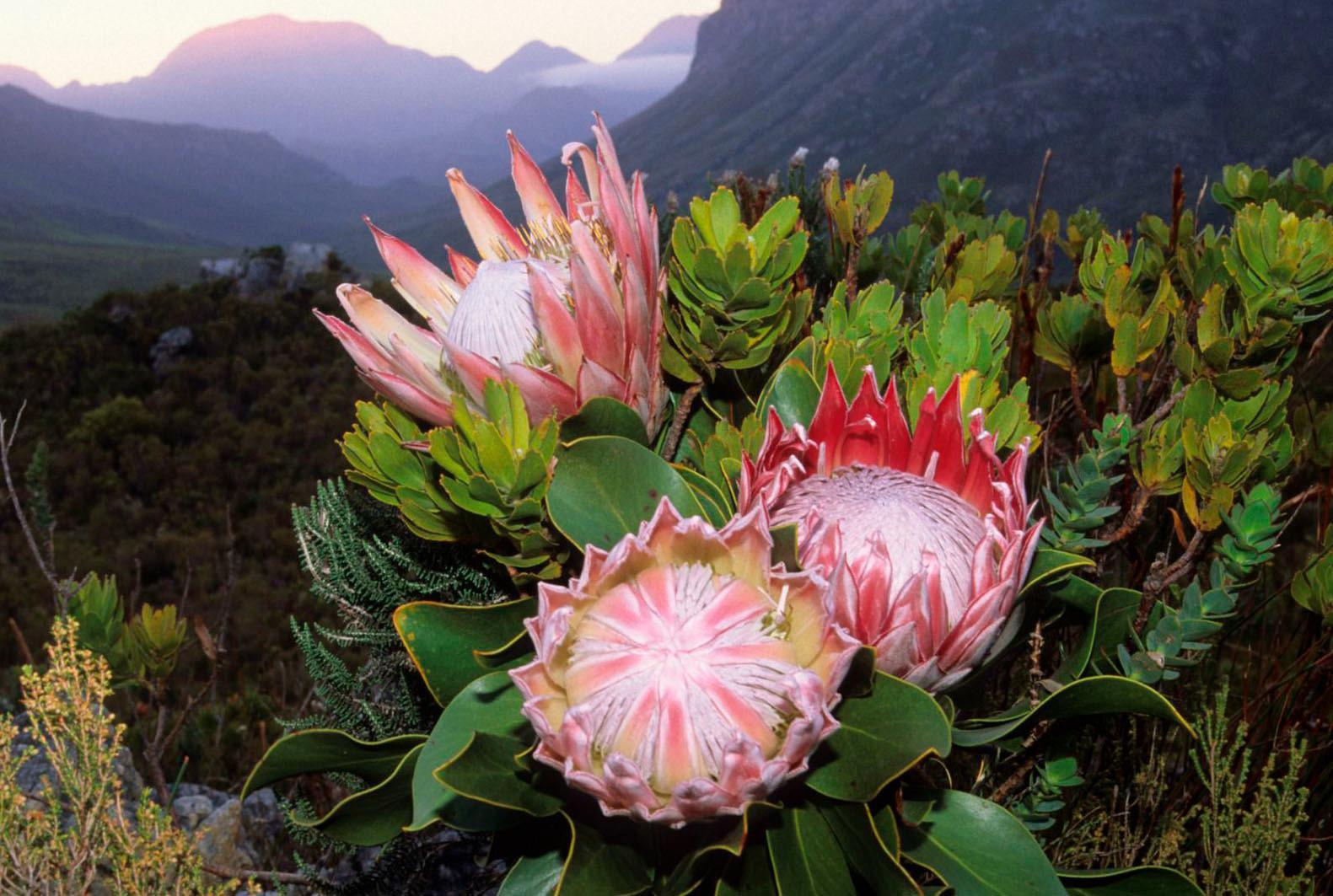
Artículo 2:
Romina Bielich Escaró
“Of the primordial technologies of human advancement, the ability to spin plant or animal fibers and weave them to create textiles is of elemental and timeless importance.”
Sir Neil Cossons, British historian, The Heritage of the Textile Industry, 2022.
For ancient peoples, agriculture and livestock farming were the keys to the birth of textile manufacturing whose purpose exceeded the basic needs of clothing and protection from the weather. Access to abundant new resources such as cotton and wool fibers, and natural pigments such as indigo and vermilion, fostered the development of new spinning techniques that elevated textiles to the category of artistic expression. As such, its product made it possible to denote and communicate key aspects of an individual's identity, such as their role in the community or social status.
In the Peruvian Andes, the native peoples generated a vast textile sample of great importance and diversity. From the Paracas cloaks, considered one of the finest, most beautiful and sophisticated textile arts in the world (MINCETUR, 2021), to the Nazca and Moche weavings, known for their use restricted to the priestly elite (Museo Chileno del Arte Precolombino, 1996) and the specialization in the technique of the slotted tapestry (Galería del Arte Precolombino del Perú, 2024) respectively. It is possible to admire an exemplary tradition that was transmitted and evolved throughout the generations, assimilating the cultural influences that preceded the Inca Empire.

Paracas mantle. Source: ccincagarcilaso.gob.pe
The textile techniques of the Peruvian Andean communities went through numerous adaptation processes, managing to conserve their essence even after the establishment of the Viceroyalty of Peru and the consequent establishment of mechanisms to restructure human capital for productive purposes. Nowadays, their perseverance allows us to enjoy the fruits of the Cuzco, Arequipa, and Taquile textiles.
More than 8000 kilometers away from Peru, around the Gulf of Guinea located on the coast of West Africa, the native communities of Ghana and Nigeria developed their own traditional textile manufacturing. The Ashanti communities of Ghana and the Yoruba communities of Nigeria used mainly the loom, a wide repertoire of vibrant colors and the combination of geometric patterns to design high quality textile products.
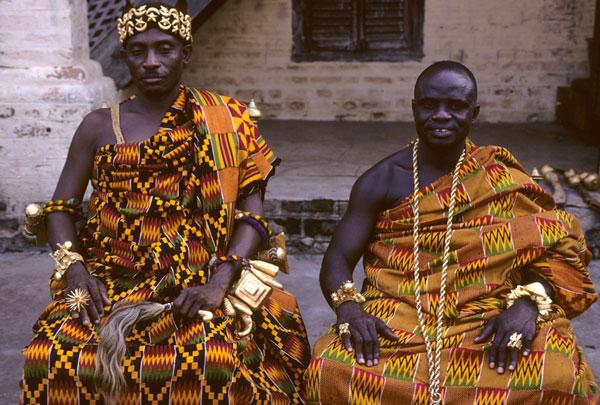

Similarly, in Nigeria, a beautiful, handcrafted fabric composed of long strips of patterns is produced by the Yoruba, an important ethnic group in the southwest of the country. The aso oke features a high level of symbolism expressed through the choice of colors and patterns. Recognized as great weavers, the Yoruba maintain a strong tradition regarding the production of aso oke, as it is customary for both the textiles and the pieces commissioned to the artisans to be passed down from generation to generation (The Centenary Project, 2024).
One striking aspect is the way in which West African textile crafts remain relevant today. For both Ghanaians and Nigerians - and their respective ethnic groups - kente and aso oke are part of the attire worn on the most special occasions, from weddings and ceremonies to graduations.
In Ghana, the popularity of kente has led to its integration into the design process of entirely contemporary, everyday clothing, even being digitally reproduced for use in footwear and various accessories. In the rest of the sub-Saharan region of the African continent and some communities of African descent, the kente has become a latent symbol of identity, pride and collective heritage through its adoption by African leaders and its inclusion in the designs of graduation stoles in the United States (Minneapolis Institute of Arts, 2024).
Andean handcrafted textiles and those that we can appreciate in West Africa share numerous characteristics that contribute to their uniqueness and artistic mastery. In Peru, generally, traditional handcrafted textile production is commonly found in the field of tourism, the production of typical folkloric costumes and the daily use of rural communities. In recent years, Peruvian textiles with a less traditional vision have gained space in international fashion due to the versatility of the fabric and the recent diffusion of the traditional silhouette of Andean women (El Comercio, 2024).
Therefore, it is of utmost importance to make use of the tools provided by this information age to intentionally multiply the spaces in which Andean textile handicrafts are disseminated, with special emphasis on its versatility, which would allow it to be part of every home. Learning from African textile dissemination and its amalgamation could be a possibility of combined growth where the textiles are integrated with social and culinary aspects, thus contributing to the strengthening of a Peruvian African cultural platform rooted in similar histories.


12 sour oranges
2 kilograms of brown sugar
Water
Salt
For the milk caramel:
1 liter of fresh milk
500 grams of brown sugar
1 cinnamon stick
Wash the oranges very well and peel them. Remove part of the pulp and seeds (making a hole). Wash two or three more times and soak for three or four days in salted water. Remove the oranges and rinse them. Then put them in water, over medium heat, for 15-20 minutes (repeat the process two or three times), until they are no longer bitter and have a smooth or soft texture.
Rinse one last time and boil the oranges in a pot with water, gradually adding the sugar. Bring to a slow boil (1h-1:30h); when they are ready (the oranges should have a sweet flavor and honey consistency), remove the oranges from the heat and let them cool. Fill the oranges with milk caramel; dried fruits such as figs or raisins can be added.
Separately, boil the milk with the sugar and cinnamon and stir in the pot, until a homogeneous mixture is obtained (approximately 30 minutes).
Centro Urbes. (23 de julio de 2020). Las lomas de Lima: entre las invasiones y el derecho a la vivienda digna. https://centrourbes.wordpress.com/2020/07/23/las-lomas-de-lima-entre-las-invasiones-y-el-derecho-a-lavivienda-digna/
Moat, J. et al. (2021). Seeing through the clouds – Mapping desert fog oasis ecosystems using 20 years of MODIS imagery over Peru and Chile. International Journal of Applied Earth Observation and Geoinformation, 103. https://doi.org/10.1016/j.jag.2021.102468
NASA. (s.f.). South Africa’s Greater Cape Floristic Region.
https://earthobservatory.nasa.gov/images/152000/south-africas-greater-cape-floristic-region
Programa de las Naciones Unidas para el Desarrollo [PNUD]. (2022). Detrás de la Neblina: lecciones aprendidas en las lomas de Lima.
https://www.undp.org/sites/g/files/zskgke326/files/migration/pe/PE_PNUD_EbA-Lomas-Detras-de-la-nebli na.pdf
1
South African National Biodiversity Institute [SANBI]. (s.f.). Vegetation of SA. https://pza.sanbi.org/vegetation/fynbos-biome
Ministerio de Comercio Exterior y Turismo del Perú (2021). Mantos Paracas vuelven al Perú, ¿Cómo hace el Perú para recuperar su patrimonio cultural?.
https://peru.info/es-pe/comercio-exterior/noticias/7/32/mantos-paracas-vuelven-al-peru---como-hace-el-p eru-para-recuperar-su-patrimonio-cultural-
Museo Chileno del Arte Pre Colombino (1996). NAZCA. Santiago de Chile. 1996. Página 20- 21.
https://museo.precolombino.cl/wp-content/uploads/2020/10/Nasca.pdf
Galería del Arte Precolombino del Perú (2024). Colección Plata y Oro de los Incas. Textiles Mochica. Textiles Mochica - Colección Plata y Oro de Los Incas (coleccionpoli.com)
Timothy S. Y. Lam Museum of Anthropology. Ghana: Weave a Kente Cloth. Ghana: Weave a Kente ClothTimothy S. Y. Lam Museum of Anthropology (wfu.edu)
The Centenary Proyect. A close-up on Aso-Oke of the Yoruba.
https://artsandculture.google.com/story/a-close-up-on-aso-oke-of-the-yoruba-pan-atlantic-university/ZgW B6Y0ZViQKJw?hl=en
Minneapolis Institute of Art. Asante Kente Cloth. Asante Kente Cloth –– Minneapolis Institute of Art (artsmia.org)
Diario El Comercio (01 de marzo de 2023). Diseñador peruano Sergio Dávila presenta su colección durante la Semana de la Moda de París. https://elcomercio.pe/viu/moda/disenador-peruano-sergio-davila-presenta-su-coleccion-durante-la-semana -de-la-moda-de-paris-moda-peruana-disenador-peruano-desfile-de-modas-noticia/
https://programaacua.org/wp-content/uploads/2022/08/Libro-Fogon-Afroperuano.pdf
